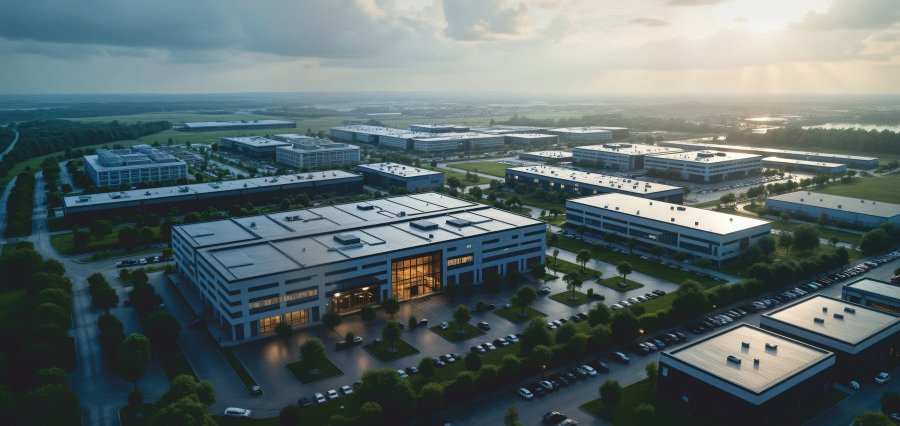New World
The last few decades have seen a holistic and rapidly accelerating reconfiguration of the global business environment fueled by a compounded interdependency of technological progress, rising geopolitics, changing consumer culture, and accelerating quests for sustainability. The last decades have seen a historic reconfiguration of business from comparatively stable, localized firms to a hyper-networked, unstructured, and complex worldwide environment. Appreciation of this journey involves a consideration of the dominant forces continuously reconfiguring the way companies are imagined, run, and maintained.
The strongest force driving this business transformation has probably been the information revolution and advent of the internet. Begun in the mid-1990s and growing exponentially ever since, the internet eliminated geographical boundaries, equalized the access to information, and opened entirely new avenues for business and communication. Those e-commerce giants, Amazon, changed the way people shopped, social media changed the way people marketed and communicated with each other, and made big brands. The web wave compelled businesses with physical stores to be online or risk being left behind. Having access to customers across the globe, gathering data in millions, and having the power to automate was a necessity strength and not a strength. This digital shift reshaped business models, supply chains, and customer engagement strategies at their very core. Complementary to the digital tidal wave, globalization significantly impacted business change.
Removal of barriers on trade across borders, improvements in transport and logistics (like containerization), and opening of capital movements enabled unprecedented flows of goods, services, and capital across borders. Firms started unbundling their value chains, sourcing from one country, manufacturing in another, and selling in a third, in search of efficiencies and new markets. This further increased the prevalence of complex global supply chains at lower prices and greater consumer choice. Globalization also increased competition between companies, compelling them to innovate and compete globally, which compelled them to specialize and become efficient. The early 2000s also brought disruption technologies that further accelerated business transformation.
Global deployments of cellular technology, cloud computing, and subsequently Big Data and Artificial Intelligence (AI) brought new dimensions of complexity and opportunity. Smartphones revolutionized the manner in which customers interacted with businesses and consumed services, and “always-on” connectivity became ubiquitous. Cloud computing popularized first-class IT infrastructure to the masses, enabling start-ups to grow big quickly without forking out tens of millions of dollars up front. Big Data and AI, in return, enabled businesses to draw insights from customer behavior previously unimaginable, automate processes, and even make autonomous decisions, creating highly customized customer experiences and optimal resource usage. The second significant business change driver has been the changing composition of the workforce and talent management.
Industrial to knowledge economies transformation placed high value on intellectual capital. Businesses set out to compete fiercely for talent, understanding that human creativity and intellect were the most significant differentiators. This led to specialist HR functions focused on talent attraction and retention, individuals as the overarching priority, and the creation of advanced strategies for talent attraction, retention, and management. More recently, the COVID-19 pandemic served as a supercharge to flexible and hybrid working arrangements, compelling organizations to flip rapidly to remote working and rethink conventional office spaces. This has compelled companies to put people’s wellbeing first, spend money on remote work tools, and build more transparent and adaptable work cultures. The past decade has seen business transformation compel ethics and sustainability into the spotlight.
Increased public awareness of climate change, social injustice, and corporate ethics has compelled corporations to transcend profit maximization. ESG considerations have become a necessity for employees, consumers, and investors. Companies are now compelled to show commitment towards sustainable business practices, ethical supply chains, fair employment terms, and community involvement. It has led to the creation of “purpose-driven” companies and mainstreaming of sustainability in the business, fueling the innovation in clean energy, circular economies, and social responsibility products. In addition, geopolitical shifts and rising protectionism have added new dimensions of complexity in business expansion.
While globalization initially sought to mitigate barriers, the past few years have witnessed the resurgence of trade tensions, re-shoring of supply chains, and national security and data sovereignty concerns. The US-China trade war, the war between Ukraine and Russia, and pandemic-induced supply chain shutdowns have led businesses to re-evaluate their global presence, supply chain diversification, and embracing “friend-shoring” or “near-shoring” strategies. This has resulted in rethinking the global operating models where risk management and resilience are as central as cost-cutting. The pace of regulatory change and greater scrutiny has also impacted business expansion. Governments worldwide are struggling with the implications of digital disruption, data privacy, concentration of markets, and workers’ activity in the new economy.
Regulations such as GDPR (General Data Protection Regulation) have changed the manner in which companies manage customer data, and antitrust issues are resulting in greater scrutiny of the tech giants. Companies today have to navigate a complicated network of compliance programs, requiring strong ethical and legal foundations, which often find their way into their web strategy. And finally, business transformation in the recent decades has been an interactive dynamic between forces of change. Whether globalizing markets in cyberspace, revolutionizing with AI, changing workforce aspirations, requirement of sustainability, and gliding into world integration smoothly to accommodating geopolitics realignments, companies have had to reboot, reinvent, and transform again and again.
The only ones that remain are those which adopted agility, used technology wisely, invested in humans, and had a clear purpose. The constant pursuit of business transformation is proof of the human spirit and willpower amidst an ever-changing world.














